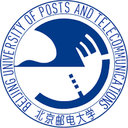Gambogic acid inhibits angiogenesis through inhibiting PHD2-VHL-HIF-1α pathway.
Nyckelord
Abstrakt
Our previous studies revealed that gambogic acid (GA), the major active ingredient of gamboge, possessed antiangiogenic activities. In this study, we further explored the mechanism of inhibition effects of GA in tumor angiogenesis. The results of luciferase, RT-PCR, and ELISA assays indicated that GA significantly decreased transcription activation, mRNA expression, and secretion of VEGF in hypoxia. We detected that GA had no effect on mRNA level of HIF-1α which targets VEGF gene, but the increase of HIF-1α protein expression in hypoxia was repressed by GA, which can be reversed by proteasomal inhibitor MG132 and siRNA of VHL. But GA exhibited no effect on expression of VHL both in normoxia and hypoxia. HIF prolyl hydroxylases (PHD enzymes) act as oxygen sensors regulating HIF, and hence angiogenesis. Our results showed that GA potentially enhanced level of PHD2, the most important HIF hydroxylase, and showed no effect on PHD1 and PHD3. Transient transfection of siRNA of PHD2 could eliminate GA-induced VEGF secretion increase. Growth of HepG2 xenografts in BALB/cA nude mice was inhibited by GA and angiogenesis was repressed significantly in tumor xenografts by immunohistochemical staining of CD-31, a vascular endothelial marker, accompanied with decrease of HIF-1α and increase of PHD2 expression in tissue extracts. This work provides the demonstration that GA shows anti-angiogenic effects via inhibiting PHD2-VHL-HIF-1α pathway.





